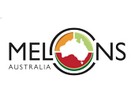A significant increase in muskmelon exports to Singapore and Japan has helped raise the overall quarterly total, compared to the COVID-19 affected 2020 season.
Australian Melon exports recorded 2,137 tonnes from July to September this year, which was 122 per cent higher compared to the same period last year, according to monthly export reports prepared by Fresh Intelligence Consulting (funded by melon levies collected through Hort Innovation). The total volume of the muskmelon category (which includes rockmelon, honeydew, and other specialty melon lines) was 1,528 tonnes, a 129 per cent increase on last year, and the value was $3.01million (up 93%). The two leading markets were Singapore, which has increased 141 per cent to 665 tonnes, while Japan increased 135 per cent to 266 tonnes.
“We know there has been strong interest from overseas for Australian melons, however freight and confidence in the supply chain to our overseas markets created pressure through 2020 and early 2021,” Executive Officer of Melons Australia, Johnathon Davey said. "We have also noticed a shift towards more airfreight, and with more flights in the air, we hope that freight only becomes more available and reasonably priced. Our melons are recognised as premium in international markets, and we’re seeing the South East Asian market demand increasing. With overseas flights opening up, tourism, hotels, cruise ships all starting to ramp up there are some positive early signs for our industry.”

Watermelons also had an overall increase with a 106 per cent increase to 609 tonnes and a 76 per cent jump in value to $1.39million. The majority of fruit went to the United Arab Emirates, with 138 tonnes (an increase of 26%), and Trade to Japan lifted 12 per cent to 47 tonnes.
In the 2020-21 financial year, Mr Davey admits that exports dropped by 40 per cent, despite total volume produced only being down by six per cent. It already seems to be heading in the right direction with the Moving Annual Total (MAT) of all forms of Australian melons was 14,063 tonnes, rising 2.7 per cent in the three months indicating a positive momentum.
“As the world begins to operate in a COVID-normal way, there will continue to be challenges no doubt with freight, logistics and ever-increasing input costs for farmers," Mr Davey said. "However, we’re hoping for our industry that the health benefits of eating melons continue to be acknowledged and prioritised, and our domestic and export markets continue to strengthen. This will support a vibrant and successful industry in the years to come.”
Trade to New Zealand continued to ramp up, following the suspension for detected cucumber green mottle mosaic virus (CGMMV) in 2019, which meant no supply across the Tasman in 2020. While trade has restarted the levels are still below the levels in the pre-suspension periods. There were 296 tonnes of muskmelons and 293 tonnes of watermelons recorded in 3 months, July to September 2021.
“We are only just seeing the first shipments through to New Zealand following the closure of the market in 2019," he said. "It is exciting to see this pathway reopened, and we hope for great things with exports to New Zealand, however, there is a significant cost involved with export to New Zealand at present due to the sheer lack of flights and sea freight between our two countries. We’re hopeful that this will only improve over the coming 12 months, except no one has a crystal ball to see where COVID might affect us next.”

However, while the export value and volumes of both muskmelons and watermelons were up, the unit price per kilogram was down 16 and 14 per cent respectively.
“Unit prices were slightly down in the first quarter of the 2021-22 export figures, and there is no one thing this can be aligned with," Mr Davey said. "Increasing freight costs, limited availability and access to freight, and increased input costs all put a strain on the growers back pocket. We would like to see unit prices increase and we will work with industry to achieve this in the long term.”
While an increase in export numbers are very positive, as an industry the vast majority of our melons grown in Australia (93%) are sold here for Australian consumers benefit, and Mr Davey is hopeful Australians will get behind melon products domestically, as much as the industry values their support each year.
“Exports have a great opportunity for growth and we will support industry in developing appropriate strategies to achieve this in the coming years, but our local consumers are a big priority," he said. "100 per cent of melons consumed in Australia through 2020-21 were Australian grown, so for consumers its really important to note that every time you buy fresh melon in Australia you’re supporting local Aussie farmers.”
 For more information
For more information
Johnathan Davey
Melons Australia
execofficer@melonsaustralia.org.au
www.melonsaustralia.org.au
